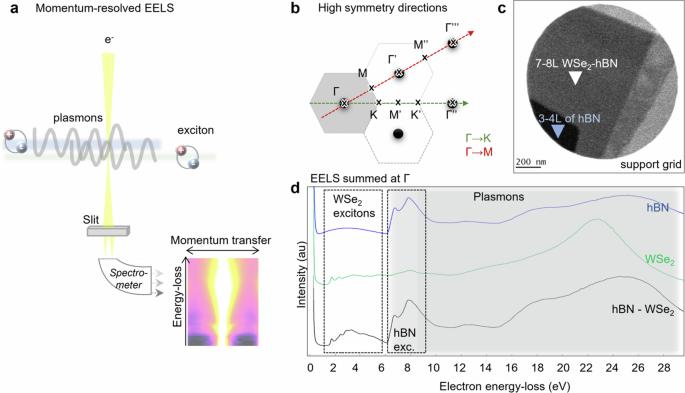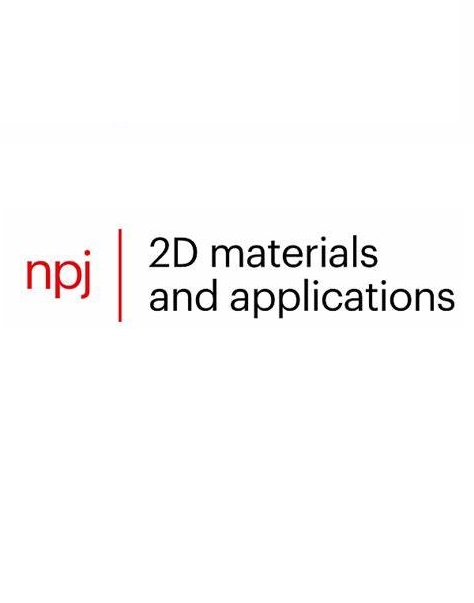绘制 hBN-WSe2 异质结构中 hBN 激子和混合质子的能量-动量频散图
IF 8.8
2区 材料科学
Q1 MATERIALS SCIENCE, MULTIDISCIPLINARY
引用次数: 0
摘要
通过结合二维(2D)薄片获得的异质结构作为设计具有定制特性的新材料的平台,受到广泛研究。过渡金属二钙化物(TMDCs)通常与六方氮化硼(hBN)相结合,以增强其激子共振。然而,人们对堆叠如何影响 TMDC 中的激子和质子或它们之间的相互作用知之甚少。在这里,我们将动量分辨电子能量损失光谱法与第一原理计算相结合,研究了多层 WSe2-hBN 异质结构及其孤立成分中质子的能量动量色散。研究人员绘制了 hBN 高动量激子在整个布里渊区的弥散图,包括单独存在和与 WSe2 结合存在的情况。质子共振和某些激子中的杂化特征表明,在解释这种异质结构的响应时,不能忽视 hBN 的贡献。此外,还讨论了将氢化萘用作 TMDC 封装剂的后果。本文章由计算机程序翻译,如有差异,请以英文原文为准。

Mapping the energy-momentum dispersion of hBN excitons and hybrid plasmons in hBN-WSe2 heterostructures
Heterostructures obtained by combining two-dimensional (2D) sheets are widely investigated as a platform for designing new materials with customised characteristics. Transition metal dichalcogenides (TMDCs) are often combined with hexagonal boron nitride (hBN) to enhance their excitonic resonances. However, little is known about how stacking affects excitons and plasmons in TMDCs or their mutual interactions. Here, we combine momentum-resolved electron energy-loss spectroscopy with first-principles calculations to study the energy-momentum dispersion of plasmons in multi-layer WSe2-hBN heterostructures as well as in their isolated components. The dispersion of the high-momentum excitons of hBN, alone and in combination with WSe2, is mapped across the entire Brillouin zone. Signatures of hybridisation in the plasmon resonances and some of the excitons suggest that the contribution of hBN cannot be neglected when interpreting the response of such a heterostructure. The consequences of using hBN as an encapsulant for TMDCs are also discussed.
求助全文
通过发布文献求助,成功后即可免费获取论文全文。
去求助
来源期刊

npj 2D Materials and Applications
Engineering-Mechanics of Materials
CiteScore
14.50
自引率
2.10%
发文量
80
审稿时长
15 weeks
期刊介绍:
npj 2D Materials and Applications publishes papers on the fundamental behavior, synthesis, properties and applications of existing and emerging 2D materials. By selecting papers with the potential for impact, the journal aims to facilitate the transfer of the research of 2D materials into wide-ranging applications.
 求助内容:
求助内容: 应助结果提醒方式:
应助结果提醒方式:


